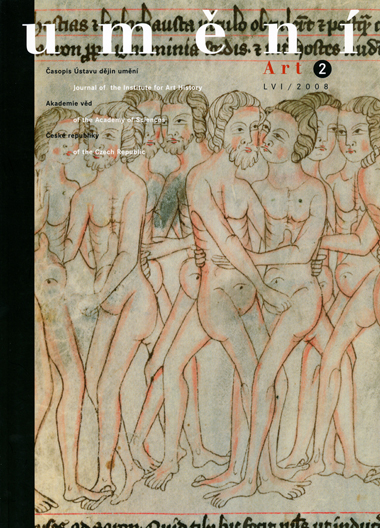Petr Wittlich
Smrt Orfeova
The Death of Orpheus, a painting by Jindřich Štyrský, created in 1931, is interesting both from the perspective of general iconography and as evidence of this prominent Czech avant-garde painter's leanings towards Surrealism. Thematically it ranks among a series of paintings in which artists, starting with Gustave Moreau, turned to the figure of Orpheus as the prototype of the artist who maintains his command of the world through the exercise of Apollonian and Dionysian elements. The theme of the death of Orpheus came to evoke the need to reinvest art with the force acquired from this synthesis. In this regard Štyrský's painting is a quintessential work, which elaborates on the problem of this approach in a specific way. This is reflected in the change of compositional arrangement, wherein instead of placing Orpheus' head and his lyre on top of each other, as the symbolists did (Moreau, Delville, Redon), Štyrský places them side by side, and this change, which involves a transition from the illusionistic paradigm of imagery to the post-Cubist paradigm of surfaces, heightens the metaphorical symbolism of the visual objects. An important element in the painting is the white surface that the head and the lyre are portrayed against, and that could traditionally be interpreted as breakers foaming on the shores of the Island of Lesbos. But it is more interesting to see it as 'fallen' drapery, in the sense of Georges Didi-Huberman's interpretation of modern 'forms of pathos'. This association better situates Štyrský's concept in a contemporary context, in the relationships towards the Parisian avant-garde at that time, where, in the circles around the review Documents, the new potential of symbolic allegory was derived out of the attention paid to the informal aspects of reality. Štyrský's symbol for the head of Orpheus is one of the first Surrealistic objects in Czech art. This led to the formation of a conception of this key symbol that, unlike other "mystical" conceptions, mainly employed in the representation of the element of life (as by Josef Šíma in Czech art), makes his conception a "magical" one, which seeks miraculous surreality in the act of imagination exercised on the material substratum of life.
Full-text in the Digital Library of the Czech Academy of Sciences:
https://kramerius.lib.cas.cz/uuid/uuid:ff72fcc6-c1db-a9ad-3457-960713882c99
< back

